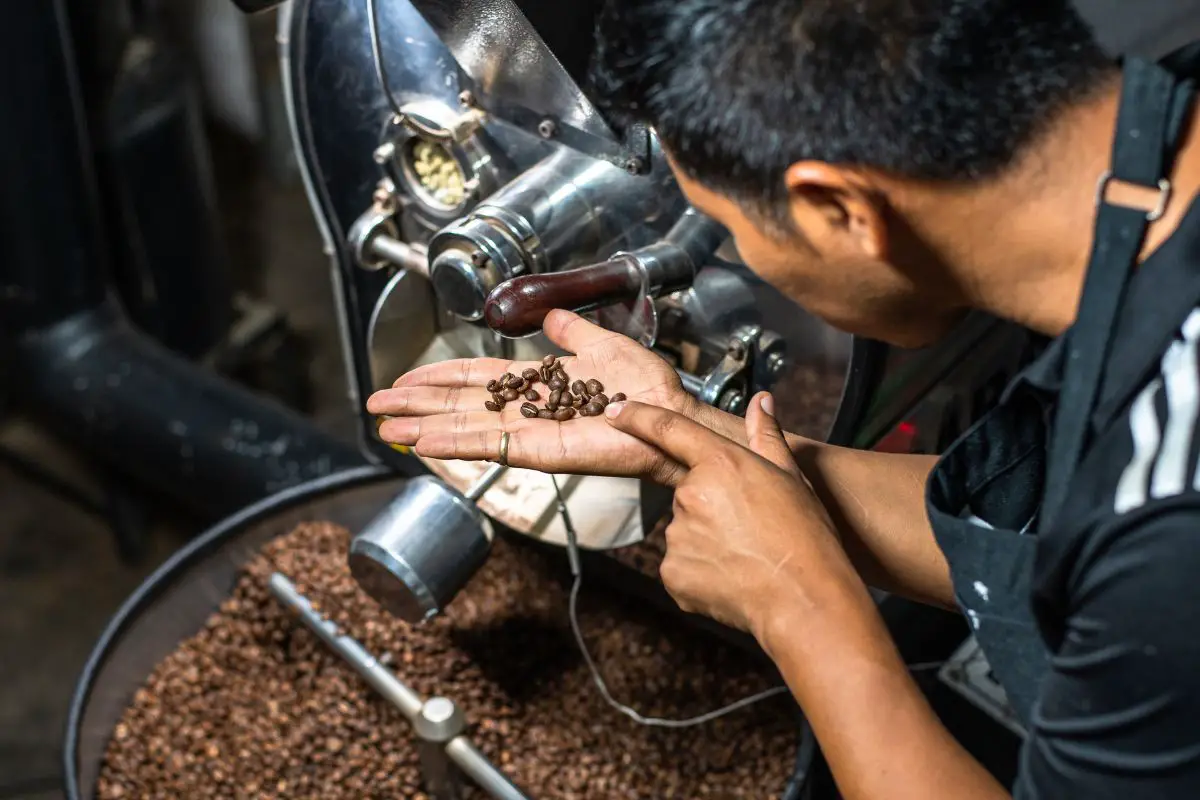Ah, the aroma of freshly roasted coffee beans. It’s enough to make any caffeine lover salivate with excitement. But before you can enjoy that perfect espresso, you need to know how to roast the beans. And no, just throwing them in the oven doesn’t count. Sorry to disappoint.
*This post may contain affiliate links. As an Amazon Associate we earn from qualifying purchases.
Roasting coffee beans is a true art form, one that requires patience, attention to detail, and a willingness to experiment. If you’re tired of bland, tasteless coffee, and want to take your espresso game to the next level, then keep reading.
Understanding the Different Roast Levels
First things first, let’s talk about the different roast levels. No, we’re not talking about a roast beef sandwich, although that sounds delicious too.
Light roast: This is the lightest roast level, characterized by a light-brown color and a delicate flavor profile. Light roasted coffee is often fruity, with a mild acidity and a light body. It’s the perfect choice for coffee purists who want to taste the unique flavors of the coffee bean.
Medium roast: This is the most popular roast level, characterized by a medium-brown color and a balanced flavor profile. Medium roasted coffee has a moderate body, with a mild acidity and a smooth finish. It’s the perfect choice for coffee drinkers who like a well-rounded coffee experience.
Dark roast: This is the darkest roast level, characterized by a dark-brown color and a bold flavor profile. Dark roasted coffee has a full body, with a low acidity and a slightly bitter aftertaste. It’s the perfect choice for coffee drinkers who like their coffee strong and robust.
Roast levels and their impact on flavor and body
Now that you know the different roast levels, you may be wondering how they impact the flavor and body of the coffee.
The roast level affects the chemical composition of the coffee bean, resulting in different flavor profiles and bodies. Light roasted coffee has a lighter body because the roasting process has not removed the natural oils from the bean. On the other hand, dark roasted coffee has a full body because the roasting process has removed most of the natural oils from the bean.
In addition, the roast level also affects the acidity of the coffee. Light roasted coffee has a higher acidity because the roasting process has not broken down the organic acids in the coffee bean. On the other hand, dark roasted coffee has a low acidity because the roasting process has broken down the organic acids in the coffee bean.
Choosing the Right Equipment
Now that you know about the different roast levels, it’s time to choose the right equipment. And no, you don’t need to invest in a space shuttle to roast your coffee beans.
Types of coffee roasters
There are two main types of coffee roasters: home roasters and commercial roasters. Home roasters are designed for small batches of coffee and are relatively cheap. They are also easy to use, making them a great choice for beginners. Commercial roasters, on the other hand, are designed for larger batches of coffee and are much more expensive. They are also more complex, requiring a higher level of skill to operate.
Factors to consider when choosing a coffee roaster
When choosing a coffee roaster, there are several factors to consider. First, think about the amount of coffee you want to roast. If you only want to roast a small batch of coffee, then a home roaster is the perfect choice. If you want to roast larger batches of coffee, then a commercial roaster is the way to go.
Next, think about your budget. Home roasters are much more affordable than commercial roasters, but they may not provide the same quality and control as commercial roasters.
Finally, think about your level of expertise. If you’re a beginner, then a home roaster is a great choice because they are easy to use. However, if you’re an experienced coffee roaster, then a commercial roaster may be the better choice because they offer more control and precision.
Roasting Coffee Beans at Home
Now that you have the right equipment, it’s time to start roasting coffee beans at home. But before you get started, there are a few things you need to know.
Preparing the coffee beans
The first step in roasting coffee beans is to prepare the beans. Make sure you have enough coffee beans for your desired batch size. Then, sort through the beans and remove any foreign objects, such as sticks or leaves.
Setting up the coffee roaster
Next, set up your coffee roaster. Make sure the roaster is clean and free of any old coffee bean residue. Then, fill the roaster with the coffee beans and start the roasting process.
Monitoring the roast
The next step is to monitor the roast. Keep a close eye on the color of the coffee beans as they roast. The color will change from green to yellow to light brown to medium brown to dark brown. This is called the “development” stage.
At each stage of the roast, the coffee beans will emit different aromas. For example, at the light roast stage, you may smell grassy or floral aromas. At the dark roast stage, you may smell chocolate or nutty aromas.
Cooling the coffee beans
Once the coffee beans have reached your desired roast level, it’s time to cool them. This is an important step because it stops the roasting process and allows the coffee beans to develop their full flavor.
Grinding the coffee beans
Now that the coffee beans are cooled, it’s time to grind them. Make sure you use a burr grinder, not a blade grinder. Burr grinders are much better for espresso because they provide a more consistent grind size.
Brewing the espresso
Finally, it’s time to brew the espresso. Make sure you use freshly roasted coffee beans and grind them just before brewing. Use the right amount of coffee, the right water temperature, and the right brewing time to make the perfect espresso.
Conclusion
Roasting coffee beans is a true art form, one that requires patience, attention to detail, and a willingness to experiment. With the right equipment and a little bit of know-how, you can easily roast coffee beans at home and enjoy a delicious, freshly brewed espresso. So go ahead, give it a try, and become a coffee roasting master.

